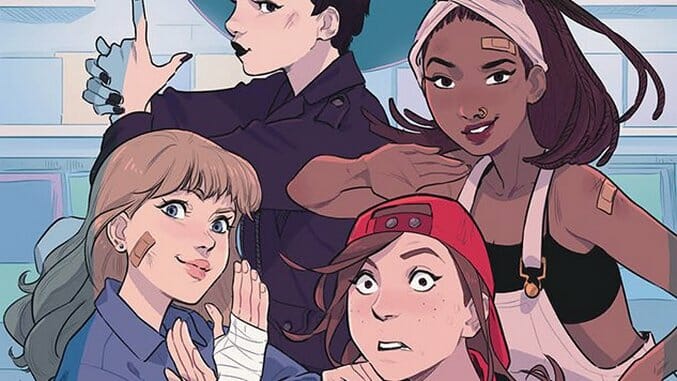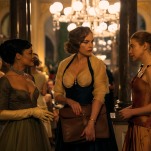Exclusive: BOOM! Announces Comic About Vinyl-Loving Teen Vigilantes, Hi-Fi Fight Club by Carly Usdin & Nina Vakueva
Art by Nina Vakueva
The ‘90s carry a nice hagiography of insubordinate saints breaking away from the mainstream vacuum. Books including Generation Ecstasy and Rebels on the Backlot choreographed bands and visionaries who broke from corporate systems to make commercial art outside of a commercial infrastructure. After all, this was the era that gifted us with Sleater-Kinney, Richard Linklater, Pavement, Bikini Kill and Sofia Coppola.
It’s no surprise that millennials hold a candle for the nonconformist blueprint that Gen X laid for us, with ‘90s nostalgia running pretty high at the moment. Former ad producer and current feature filmmaker Carly Usdin taps deep into this well for her new four-issue comic miniseries, Hi-Fi Fight Club, illustrated by Russian cartoonist Nina Vakueva and published by BOOM! Studios with an August launch date. The book revolves around a group of female vinyl store employees à la Empire Records, who transform into “patriarch-crushing vigilantes” come sundown. When newcomer Chris realizes that her favorite rocker, Rory Gory, has gone missing, she and her co-workers embrace their inner Riot Grrrls to solve the mystery.
-

-

-

-

-

-

-

-

-

-

-

-

-

-

-

-

-

-

-

-

-

-

-

-

-

-

-

-

-

-

-

-

-

-

-

-

-

-

-

-










































